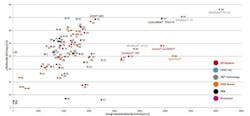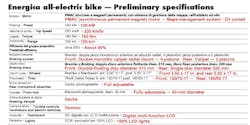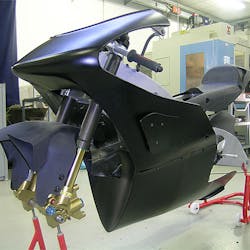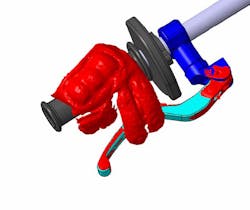Racing and 3D printing inspire superfast e-bike
Performance motorcycles abound but all-electric versions could be coming to a dealership near you.
Italian manufacturer CRP Group has plans to sell all-electric bikes starting in 2015. Billed the Energica, they integrate an array of 3D-printed and cutting-edge CNC-machined parts.
The e-bike's fairings, intake manifold, cooling ducts, seat, and more are 3D printed.
In 1970, Italian engineer Roberto Cevolini began supplying Formula 1 teams with frame parts, gearboxes, and engine components. In 1996, Cevolini’s son Franco expanded the company to materials engineering through rapid prototyping — founding spinoff Cevolini Rapid Prototyping (CRP). The junior Cevolini also developed a composite polyamide-based material called Windform that makes strong structures when laser sintered — even for delicate designs:
Windform XT2.0 is one of relatively few high-performance 3D-printing materials: It's strong enough to replace carbon-fiber-reinforced composites in some motorsports, including the Energica e-bike, and UAV applications. 3D-printed Windform parts require no post-processing (beyond polishing for a shiny finish). But more important to the Energica e-bike is that:
• The polyamide-based parts are lightweight (to boost the electric bike's efficiency), and
• Every monolithic part can be as geometrically complex as needed. For example, Energica’s CAD-optimized front mudguard and seat are complex shapes practically impossible to make with traditional mold-formed carbon-fiber lamination.
Subsidiary CRP Racing is perfecting the Energica e-bike design — a streetbike takeoff of its eCRP racing bike. It's supported by CRP USA, Mooresville, N.C., specializing in applications for 3D printing and alterative manufacturing processes.
Powered by a 100-kW PMAC synchronous motor (delivering torque to 160 Nm) the bike can reach speeds to 220 km/hr, with a range of 150 km at 70 km/hr. Its batteries (with nominal capacity of 11.7 kWh) recharge in three hours via a normal socket or to 80% capacity in 30 minutes via dc current. ABS is standard. Controls include full ride-by-wire with selectable power maps. LED lights save energy; regenerative brakes (based on an F1 design) recapture energy.It will also be on display at the Italian Culture Institute of New York September 10 — in the Year of Italian Culture show. Stewart Davis, CRP’s U.S. Director of Operations, will also explain how 3D printing is used to make many of the bike’s parts.
Some of the bike's parts that must be made of metal go through 3D printing for prototyping. For example, the Energica's brake handles are customizable to different riders. In one tailored iteration, a physical model based on motorbike-racer Riccardo Moretti’s hand was digitized into a 3D-CAD model by a seven-axis Platinum Faro Arm equipped with an optical probe. Once perfected in Windform, the final piece is machined from aluminum.
About the Author
Elisabeth Eitel Blog
Elisabeth is Senior Editor of Machine Design magazine. She has a B.S. in Mechanical Engineering from Fenn College at Cleveland State University. Over the last decade, Elisabeth has worked as a technical writer — most recently as Chief Editor of Motion System Design magazine.





